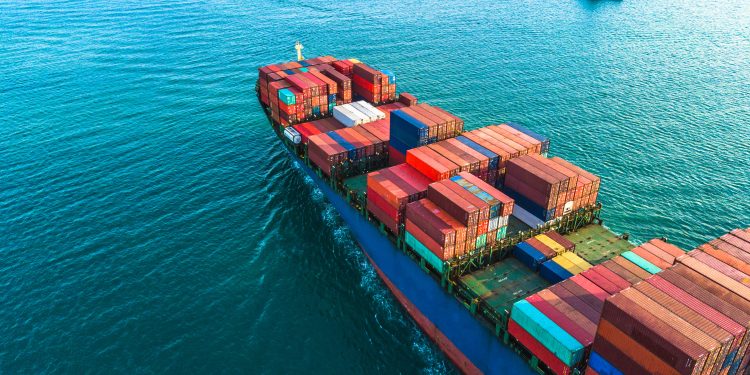ITF, in its recent report on the Performance of Maritime Logistics, highlights an increase in container freight rates, and analyzes the causes behind this phenomenon.
The rapid increase in container freight rates could be explained by the combination of pent-up demand during economic lockdowns and government fiscal stimulus policies at the start of the Covid-19 pandemic.
[smlsubform prepend=”GET THE SAFETY4SEA IN YOUR INBOX!” showname=false emailtxt=”” emailholder=”Enter your email address” showsubmit=true submittxt=”Submit” jsthanks=false thankyou=”Thank you for subscribing to our mailing list”]
The combination of the two arguably created a situation of unprecedented demand for containerised transport for which container shipping companies could not have prepared. However, when looking at the actual container transport volumes and the utilisation rates of ships, this explanation does not hold.
The volume of containers transported by the major container shipping companies continues to increase steadily, albeit with many seasonal fluctuations (including, for example, reductions at the time of the Chinese New Year). The effect of the Covid-19 lockdowns shows up in a protracted slump in container volumes during February-June 2020. Although volumes rebounded after June 2020, growth rates are in line with trend growth.
There is a remarkable difference between regions in the development of demand for containerised transport. In the Far East and North America, there appears to have been a rebound in demand for containerised goods in the second half of 2020 and the first half of 2021.
However, the volumes in container transport to and from Europe remained more or less flat, with the volumes in the first eight months in 2021 almost the same as those in 2019.
The figures on containers transported could reflect a situation of unfulfilled demand: there might be demand for container transport that cannot be serviced due to a lack of ship capacity
says ITF, adding that “if this were the case, it would normally show up in very high ship utilisation rates. However, utilisation rates are not extremely high.”
On both the Far East-North America and Far East-Europe trades, the ship utilisation rate reached a low during the first quarter 2020, after which it increased until the third quarter of 2020, followed by a gradual decline of utilisation rates at around 70% for both trade routes at the time of the writing of this report.
On the Far East-North America route, capacity has been growing at a faster rate than demand since the third quarter of 2020.

































































